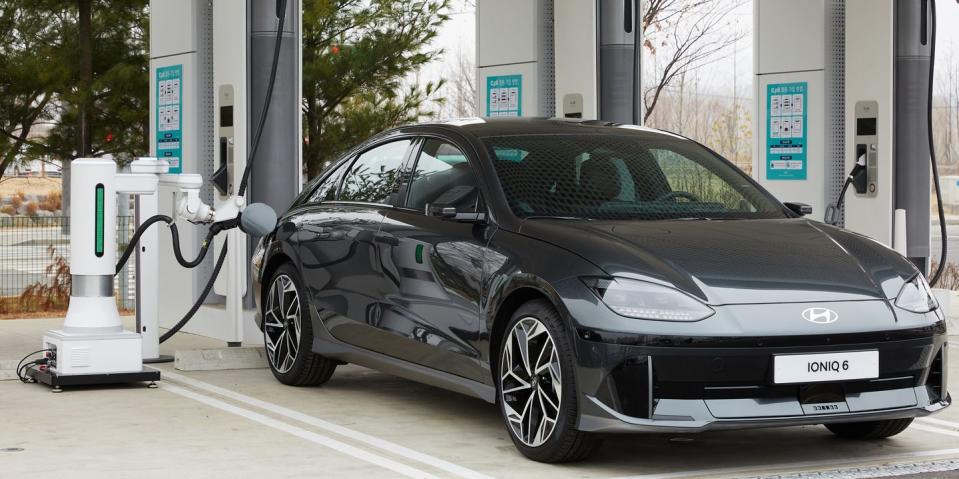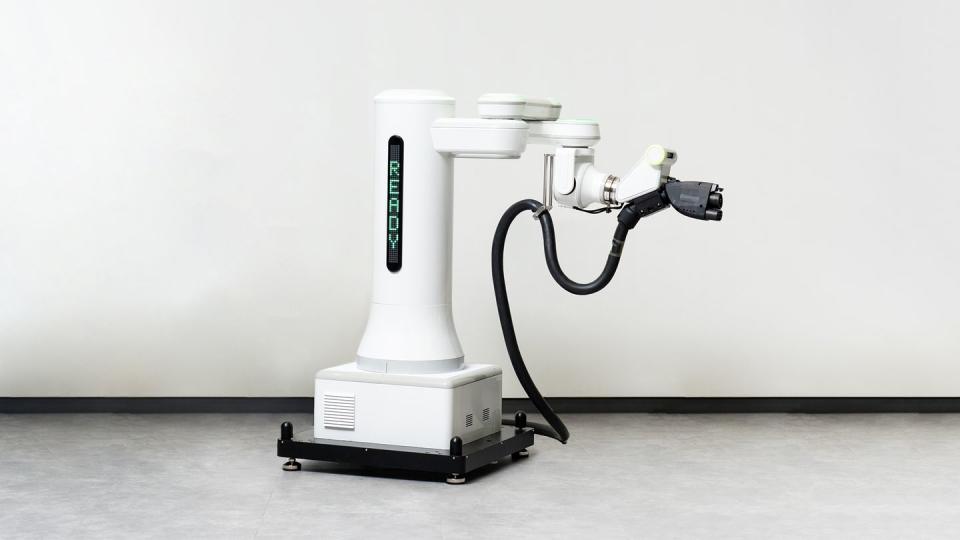Here’s Why Hyundai Is Betting on These Robots

Hyundai reveals ACR, or automatic charging robot, as part of an effort to design safety and convenience features for EV charging.
The automaker views this type of robot as part of an automated vehicle parking system, which will handle the charging process.
Volkswagen is also working on charging robots of a similar type, albeit ones with their own power source.
The future where you don't even have to plug a charging cord into your EV is inching closer to reality thanks to more than one automaker, with Hyundai revealing its own charging robot that will perform this chore for you. That's right: It's a robot that will carry a cord to the charging port in your EV and plug it in, not too dissimilar from the GONK droid in Star Wars. Except Hyundai's droid is called ACR, for automatic charging robot.
And the EV has to help a bit as well.
Here's how it works: Once you park your car, the ACR wirelessly tells the car to open its charging port, with the ACR calculating the angle and location using a camera. The robot then removes the charging cord from its receptacle and plugs it into the car's charging port. After the charging cycle is complete, the robot removes the cord and closes the car's charging port.
The use of such a robot may seem like an extravagance, at first. But there are objective needs for such robots.
"The ACR will help to make EV charging easier and more convenient, especially in dark environments. It will also improve accessibility, particularly for people with mobility barriers, as charging cables become thicker and heavier to enable high-speed charging," said Dong Jin Hyun, Head of Hyundai Motor Group's Robotics Lab.

The robot itself is actually quite complex as it has to take a lot of variables into account, include the weight and length of the charging cord, as well as the position of the car's charging port. It has to make sure the cord doesn't get stuck at any point, including around the robot itself. The robot has to work in adverse weather conditions and deal with other elements such as dust.
Hyundai expects charging robots to become a convenience feature in the future and work as part of autonomous parking control systems, where cars will act as their own valet drivers. That part of our EV future is also getting attention, as Level 3 and Level 4 autonomy continues to arrive in cars.
Perhaps the biggest question EV owners might have at this point (aside from how much this convenience will cost them at charging stations) is... whatever happened to inductive charging? Wasn't wireless charging supposed to solve this very issue, and received quite a bit of attention about a decade ago?
Well, the simple answer is that inductive charging just can't deliver the speeds that EV owners actually want. It might be useful in the context of your own garage if you don't do a lot of miles every day, but it's just not fast at all.
Yet another alternative to this technology, one that has actually been a reality for quite some time overseas, are battery swap stations. In just a couple of minutes after you drive your car into a car wash-like station, robots detach the battery from the underside of your EV and swap in a fully charged one. Automaker Nio already has plenty of such stations in China, and has just opened one in Norway as well.
Hyundai hasn't shown a liking for the battery swap approach, as there is far more engineering and expense involved to make such a process happen even in a prototype setting, not to mention the expense of the land required for such stations. But charging robots won't be cheap either, and somebody has to pay for them.
Will charging robots be common in the future, or is this an expensive way to simplify charging? Let us know in the comments below.

 Yahoo Autos
Yahoo Autos 